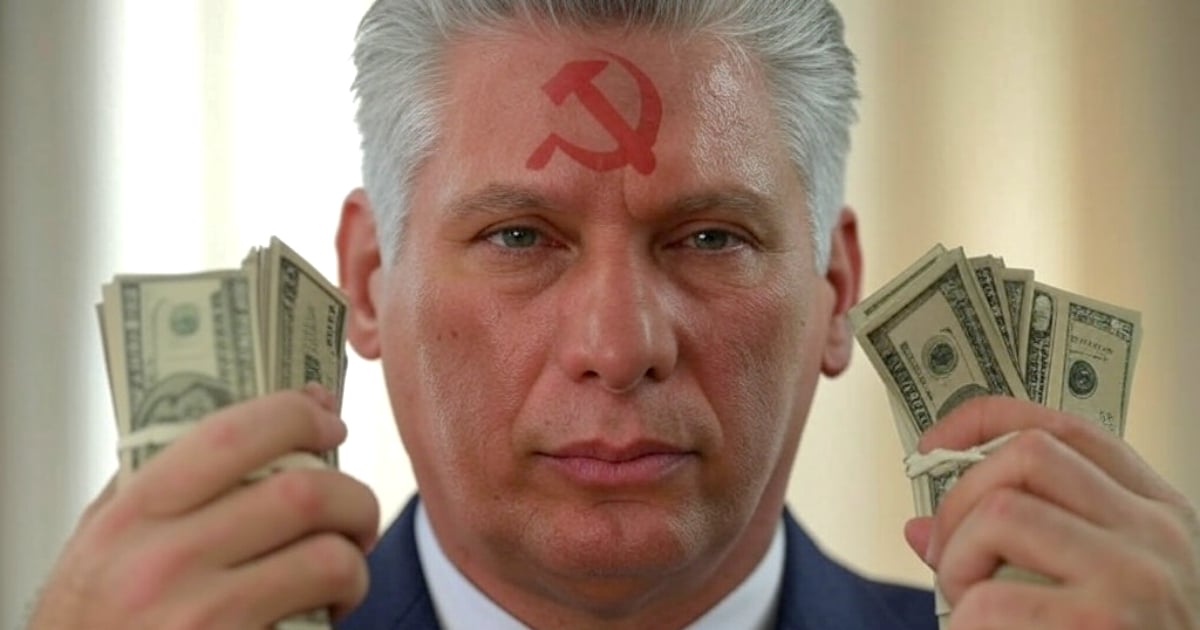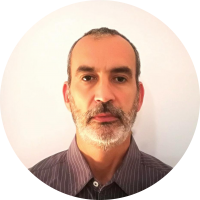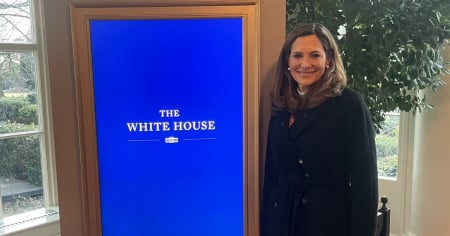
Related videos:
The Cuban regime reiterated its intention to introduce "structural changes" in the economy, but made it clear that these will be carried out within the confines of the "socialist model."
This was stated by several official economists during the recent airing of the television program Cuadrando la Caja, where they defended the necessity of reforms, but under state control and with the Communist Party as the absolute governing body.

However, the proposal for structural transformations does not convince independent analysts. Economist Pedro Monreal criticized the government narrative, pointing out that the official debate avoids delving deeper into the structural crisis facing the country, which is the result of previous failed reforms pushed by the government itself.
"If we are talking about structural change today, it is because the government previously imposed a failed structural change that culminated in a crisis," he stated in a series of messages on his X account (formerly Twitter).
The official discourse: Changes without rupture
During the television program, the panelists emphasized that a "structural change" does not necessarily imply a "regime change" and that socialism should be strengthened, not replaced.
The former Minister of Finance and Prices, José Luis Rodríguez, stated that the current proportion of the Cuban economy is not sustainable, with the state sector generating 84% of GDP, while the private sector, although growing, continues to represent a smaller fraction.
Meanwhile, former spy and economist Ramón Labañino emphasized that the government's goal is to "preserve the socialist model based on Marxism and Leninism". In October 2024, and from Spain, where one of his daughters was pursuing postgraduate studies, Labañino stated that “the Mipymes in Cuba are here to strengthen socialism.”
He also criticized economists who suggest a transition to a more open market system, asserting that allowing a free market would inevitably lead to "the concentration of property and wealth, which would take us to capitalism."
The resistance to fundamental reforms
In their statements, official economists argued that Cuba's main economic problem lies in the need to reorganize its productive structure, improve productivity, and control inflation.
However, they avoided mentioning key topics such as market freedom, the privatization of strategic productive sectors, or unrestricted economic opening without state intervention.
Monreal highlighted that the program avoided discussing fundamental concepts such as "productivity" and "income," which are essential for any real economic transformation. He also criticized that independent economists are dismissed under the label of "gurus" while the government insists on presenting measures without concrete substance.
Previous reforms and their failures
The official discourse on "structural changes" comes after several attempts at economic adjustment that have ultimately worsened the country's crisis.
The initiative known as Tarea Ordenamiento, which in 2021 aimed to unify the currency and restructure salaries and prices, resulted in hyperinflation and a decline in the purchasing power of Cubans.
Furthermore, the attempt to promote micro, small, and medium enterprises (Mipymes) has been a subject of controversy, as many view them as a survival tool for the regime through the creation of a clientelistic network of “new actors in the economy”, rather than a genuine change in the country's productive structure.
In this regard, several reports have indicated how the regime has promoted cooperativism as a solution, but without granting cooperatives true independence from the State. At the same time, it has "experimented" with the state budget, adjusting subsidies and cuts, but without a clear strategy to stimulate the economy.
The Cuban economy at a critical juncture
The context in which this other "structural change" is being proposed could not be more critical. Out-of-control inflation, the food crisis, and the government's inability to attract foreign investment have plunged the economy into deep stagnation.
The promises to “perfect socialism” and to make it “more prosperous and sustainable” have been a constant in the rhetoric of the leader Miguel Díaz-Canel, but the results have not been tangible for the majority of Cubans, who face an increasingly precarious situation daily.
A repetitive cycle of false promises
For decades, the regime has insisted on the idea of "perfecting the socialist model" as the solution to the country's economic problems. On numerous occasions, Díaz-Canel has promoted plans for "updating" or "rectifying" the model without representing any real structural changes.
In 2024, he reaffirmed that Cuba would continue "perfecting its socialist economy" without allowing room for reforms that would enable autonomy for the private sector. In 2023, Díaz-Canel acknowledged the economic crisis but dismissed any significant changes and reaffirmed his commitment to the "construction of socialism" despite the failure of his policies.
Over the years, the official discourse of the "eternal revolution" that promotes "continuity" has been cyclical: a constant emphasis on "improvement" without undertaking fundamental reforms. The question now is whether the regime is willing to implement effective changes, or if this is just another strategy to buy time without addressing the country's structural problems.
Towards a State Capitalism?
Despite the official rhetoric rejecting capitalism, the economic reforms promoted by the regime may be steering Cuba towards a state capitalism, a model in which the government maintains absolute political control but allows for a market economy regulated by the state, similar to what has been observed in China or Russia.
This type of system tends to deepen inequality, as the State remains the main economic actor, but grants privileged spaces to certain business sectors aligned with those in power. Instead of promoting genuine economic decentralization, there is a risk of consolidating a bureaucratic elite with access to key resources, while the majority of the population remains trapped in precarious conditions.
In countries like China and Russia, state capitalism has generated significant social inequalities, structural corruption and wealth concentration among privileged groups close to the government. If Cuba follows this path, the result could be an economy marked by greater injustices than those found in liberal capitalist systems, where at least there are mechanisms for competition, economic mobility, and a greater diversification of power.
The key question is whether the Cuban regime is truly willing to make changes that benefit the entire population or if its aim is merely to transform the economy just enough to ensure its own political survival and absolute control of the country.
Possible future scenarios resulting from the "structural changes" of the "continuity"
Díaz-Canel's economic policy, by promoting "structural changes" without altering the political regime, aims at a scenario of limited adjustments that do not address the underlying issues.
Instead of a real transformation that would allow for the development of a more dynamic and decentralized market, the Cuban model remains trapped in a logic of controlled reforms aimed at alleviating economic tensions without relinquishing power or altering the state monopoly over the economy.
This could lead to several possible scenarios:
1. Prolonged stagnation: Without structural reforms that include greater economic openness, productive decentralization, and true autonomy for the private sector, the economic crisis will continue to deepen. Inflation, scarcity, and the lack of foreign investment would continue to erode the standard of living for the population.
2. Greater dependence on external allies: Since the current economic model is unable to generate sufficient domestic revenues, the government will continue to rely on financial support from strategic allies such as Russia, China, and the BRICS bloc. However, this dependency may not be sustainable in the long term.
3. Half-hearted reforms that do not address the crisis: As seen with the Mipymes and banking, the regime implements limited changes to alleviate the economic deterioration, but without allowing for real liberalization. These measures may temporarily ease some issues, but they fail to reverse the structural crisis.
4. Greater control and repression: To maintain the model without making real economic concessions, the government might resort to increased controls, restrictions, and repression against social discontent, further criminalizing private activity and political opposition.
In short, without a political change that allows for greater economic flexibility, Cuba will remain trapped in a cycle of recurring crises, with small openings that fail to produce real and sustainable change.
Filed under:





